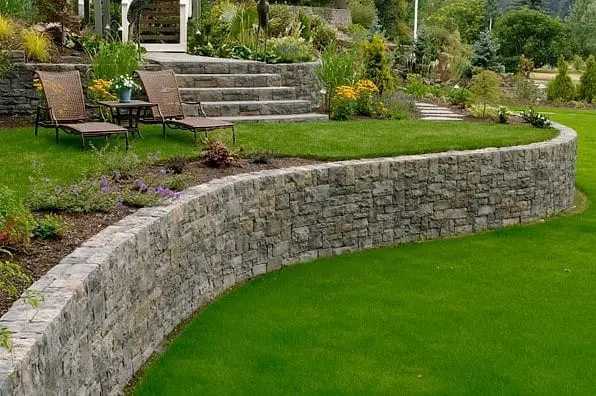Contents
Intro:
Retaining walls are not just functional structures; they’re also integral elements of landscaping design. Whether you’re a homeowner looking to enhance your backyard or a professional landscaper, mastering the art of wall retaining is essential for creating visually appealing and structurally sound landscapes. In this blog, we’ll explore various techniques and tips to help you achieve mastery in building and designing retaining walls.
Retaining Walls: Understanding the Basics:
Before diving into advanced techniques, it’s crucial to understand the fundamentals of retaining walls. Retaining walls are primarily used to hold back soil and create level ground in sloped areas. They can be made from various materials such as concrete blocks, stone, or timber, each offering unique aesthetics and structural properties. Transform your backyard into a stunning outdoor oasis with these innovative retaining wall ideas. Whether you’re dealing with sloping terrain or simply looking to add dimension to your landscape, retaining wall ideas offer endless possibilities for enhancing both the functionality and aesthetics of your outdoor space

Choosing the Right Material:
The choice of material plays a significant role in the design and durability of retaining walls. Concrete blocks are popular for their strength and versatility, while natural stone provides a more rustic and timeless look. Timber offers a warm and natural appeal but requires proper treatment to withstand moisture and decay. Consider the site conditions, budget, and aesthetic preferences when selecting the material for your retaining wall.
Proper Drainage:
Effective drainage is essential for preventing water buildup behind the retaining wall, which can lead to erosion and structural failure. Incorporate drainage features such as gravel backfill, weep holes, and perforated pipes to allow water to escape freely. Additionally, ensure proper grading to direct water away from the wall and surrounding areas.
Reinforcement Techniques:
In areas with high soil pressure or steep slopes, reinforcement techniques may be necessary to enhance the stability of the retaining wall. Options include installing geogrids or geotextiles, which provide additional support by anchoring the soil layers behind the wall. Proper installation and placement of reinforcement materials are critical for maximizing their effectiveness.
Building a Solid Foundation:
A strong foundation is the cornerstone of a durable retaining wall. Excavate the base to the required depth and compact the soil to provide a stable footing. Depending on the soil conditions, a layer of gravel or crushed stone may be added to improve drainage and distribute the load evenly. Follow manufacturer guidelines for proper installation of base materials and ensure adequate compaction throughout the construction process.
Attention to Detail:
Details such as proper alignment, levelness, and aesthetics can elevate the overall appearance of your retaining wall. Take the time to carefully lay each block or stone, ensuring tight joints and consistent height. Use a level and string line to maintain straightness and alignment throughout the construction. Pay attention to finishing touches such as capstones or coping to add a polished look to your retaining wall.
Professional Consultation:
If you’re tackling a large or complex retaining wall project, don’t hesitate to seek professional advice and assistance. Consulting with a landscape architect or engineer can help ensure that your design meets structural requirements and local regulations. They can also provide valuable insights and recommendations based on their expertise and experience.
Conclusion:
Mastering the art of wall retaining requires a combination of technical knowledge, practical skills, and attention to detail. By understanding the basics, choosing the right materials, implementing proper drainage and reinforcement techniques, and paying attention to construction details, you can create beautiful and functional retaining walls that enhance any landscape. Whether you’re a DIY enthusiast or a professional landscaper, these tips will help you achieve success in your retaining wall projects. Start mastering the art of wall retaining today and elevate your landscape design to new heights.



